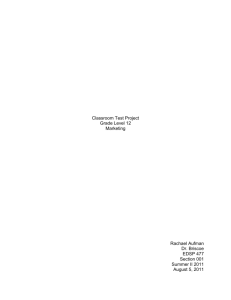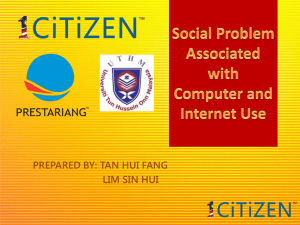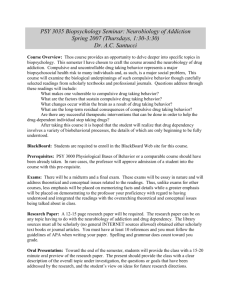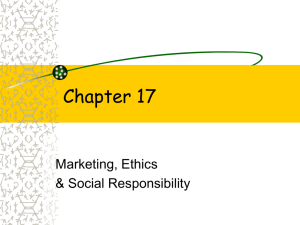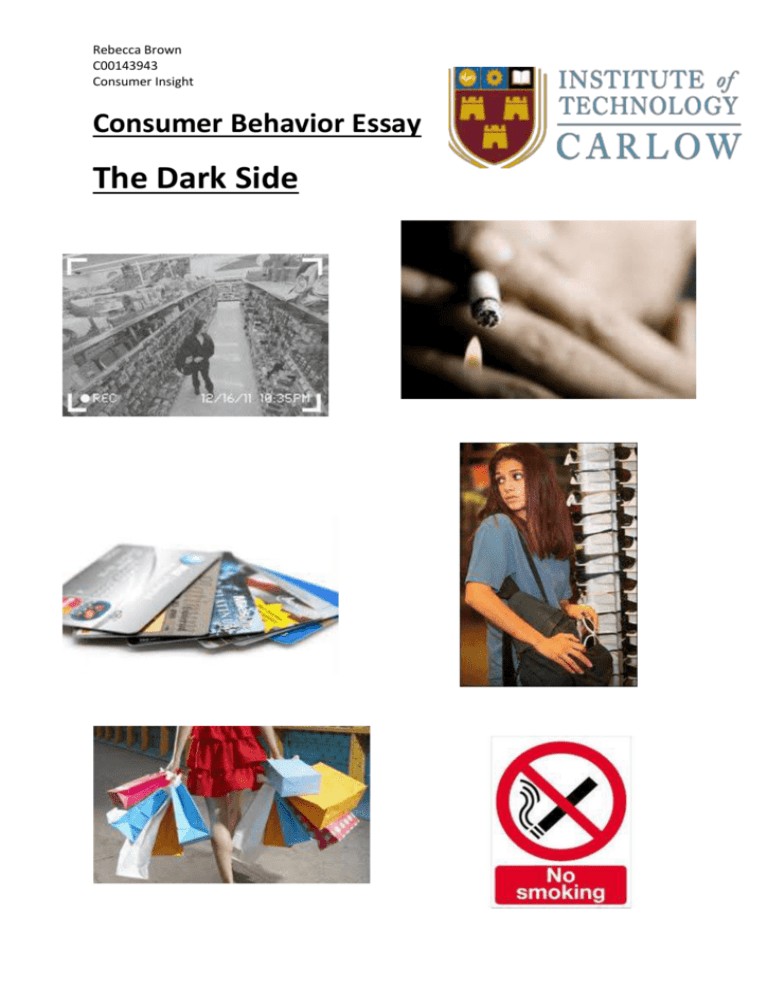
Rebecca Brown
C00143943
Consumer Insight
Consumer Behavior Essay
The Dark Side
Rebecca Brown
C00143943
Consumer Insight
Consumer Behaviour Essay – The Dark Side
Introduction:
What is Consumer behaviour?
The field of consumer behaviour covers a lot a ground: It is study or the processes involved when
individuals or groups select, purchase, use, or dispose or products, services, ideas or experiences
to satisfy needs and desires. Needs and desires to be satisfied range from hunger and thirst to love
and, status, or even spiritual fulfilment. (Solomon, 2004)
The study of consumers helps firms and organizations improve their marketing strategies by
understanding issues such as the psychology of how consumers think, feel, reason and select
between different alternatives (E.g. Brands, products, retailers).Accepting How the consumer is
influenced by the environment (Culture, Family, Media) and the behaviour of consumers while
shopping (Positive or Negative behaviour).
Consumer psychology studies how our feelings, views, thoughts and perceptions influence how
people buy and relate to goods and services. Davis and Palladino (1995) defined consumer
psychology as the study that deals with the activities directly involving in selecting, obtaining and
using products, services, and ideas to satisfy needs and desires, including decision processes that
precede and follow these actions. (A.Apruebo, 2005)
Despite the positive effects of consumer behaviour on a firm, sometimes consumers’ worst enemies
are themselves. Consumers are often seen as sensible decision makers, trying to do their best to
obtain products and services that will maximise their well-being for themselves, their families, and
their society. Even though government regulators, researchers and concerned industry people try to
avoid it consumers are not always faithful, reliable or trustworthy. This essay will explore the dark
side of consumer behaviour and show how consumer’s choices and actions often result in harmful
consequences to individuals and the society in which they live. (Solomon, 2004)
Compulsive Consumption:
Compulsive consumption is in the realm of abnormal behaviour. Consumers who are compulsive
have an addiction, some may say they are out of control and their actions may have harmful
consequences of them and those around them. One major example of compulsive consumption is
uncontrollable shopping.
Years ago a person, he was unhappy, didn’t know what to do with himself- he’d go to church, start a
revolution. Today you’re unhappy? Can’t figure it out? What is the salvation? Go shopping. (Arthur
Miller, US Dramatist, 1968) cited from (Woodruffe, 1997)
Rebecca Brown
C00143943
Consumer Insight
The expression ‘’born to shop’’ is taken quite literally, consumers shop because they are obliged to
do so, rather than because shopping is a pleasurable task. ‘’Shopaholics’’ refers to consumers who
physically can’t control their problem, often a remedy to tension, worry, depression or boredom. In
examining the concept of compensation/compulsive consumption, Grunnert (1993) cited from
(Woodruffe, 1997) suggests that a lack or deficit may be satisfied by the use of resources. For
example, the lack might be one of tenderness and affection associated with feelings of loneliness
and boredom. To overcome these, according to Grunert (1993), one resource could be to contact
close friends to arrange a date, another might be to see a humorous film, suited for laughing away
unpleasant feelings. People mistake impulse buying for compulsive buying, but the impulse to buy a
particular product is momentary and it focuses on a specific product at a particular moment in time.
Compulsive buying on the other hand is an enduring behaviour that focuses on the process of
bullying. Consumer’s being bullied (whether it is at home, in work, or in college) leads them to the
feeling of ‘needing’ something to distract them. Respondents from Babin Et al’s (1994) study cited
from (Woodruffe, 1997) said
‘’I enjoy shopping when it helps me to forget my problems.’’
‘’It’s a high. It occurred to me that when I get depressed then I want to go shopping. It’s too bad it’s
expensive. It’s a thrill. It gives you a lift to buy something.’’
A huge consequence of compulsive consumption is an abnormal amount of debt. Not only do
compulsive buyers create an unmanageable amount of debt for themselves and family but also
create economic problems which can adversely affect their creditors. Consequently, understanding
this problem and providing help for those who suffer from it is not only humanitarian but it would
benefit the society as well.
Differences Between compulsive consumption behaviours:
Like I have mentioned the consequences of a compulsive buyer on their family and on society they
also bring on negative effects to themselves as well, some involve potential physical harm. Severe
physical consequences may result from additional compulsive behaviour such as drug abuse, over
eating, smoking and alcoholism. However other compulsive behaviours such as gambling and
kleptomania do not have physical effects to the extent. Compulsive buying fits into this category,
although the severity of the physical punishments is an important difference in abnormal behaviour,
the economic, social, and psychological consequences should not be underestimated. From the
stress and anxiety associated problems can arise which may lead to secondary physical
consequences .A final distinction among compulsive consumption behaviours is the treatment goal.
For many of these such as gambling, smoking, and drinking a complete abstinence from the life is
needed, however for others such as compulsive buying and overeating in reality a complete
abstinence is not a realistic treatment goal. For these behaviours, contribution must focus on how to
alter the behaviour rather than on how to avoid it.
The survey below cited from (http://research3.bus.wisc.edu) was to compare the responses of
compulsive buyers with other shoppers. Five qualitative interviews with compulsive buyers were
Rebecca Brown
C00143943
Consumer Insight
completed. The format of the design was to be very flexible to permit the informants to discuss in
detail their own feelings, ideas and thoughts. The survey covered a variety of dimensions. Of set of
items was intended to decide if abnormal consumers differed from the overall population on a
measure of compulsivity. Also included in the survey were dealings of materialism, fantasy, and
items assessing feelings towards shopping. The survey was required to assess the economic and
emotional consequences of compulsive buying. The simplest level, we can see a large variance
between the compulsive buyers and their reliance on credit cards. The data is beneficial in extending
these findings to more personal areas of compulsive buyer’s lives. The compulsive buyers naturally
were ashamed and mortified by their behaviour. They labelled themselves as unloved and rejected.
‘’I didn’t have one person in the world I could talk to. I don’t drink. I don’t smoke. I don’t do dope.
But I can’t stop. I can’t control it. I said I can’t go on like this… My husband hates me. My kids hate
me. I’ve destroyed everything. I was ashamed and I just wanted to die.’’ (Female, 40) (J.Faber, 1989)
Rebecca Brown
C00143943
Consumer Insight
Rebecca Brown
C00143943
Consumer Insight
Consumer Theft:
While compulsive consumption outlines an uncontrollable desire to purchase products, consumer
theft reflects a desire to steal products. Marketers and consumer behaviour researchers traditionally
have examined consumer behaviour in order to figure out how to better market products/services.
Significantly less attention has been shown the undesirable consumer behaviours that have negative
consequences upon business and society. Another problem associated with consumer behaviour is
consumer theft. Shrinkage is the term in industry associated with inventory and cash lost from
shoplifting and employee theft. The large majority of shoplifting is not actually done by professional
thieves or by people or physically need the stolen products, it’s done by middle or high income
people who shoplift for the Excitement and thrill, or in some cases it is done for the substitution of
affection.
The black market is bad for everyone. Apart from those involved (the criminals). It jeopardises jobs,
it fleeces the Exchequer of much needed tax revenues, and it threatens the society by elevating
dangerous, often violet groups who care little about the law.
According to a report published by Ibec group retail Ireland cited from
(http://www.irishtimes.com/newspaper)
‘’shoplifting, cash robberies and fraud are a major and increasing problem for Irish retailers.’’
With 35% of Irish businesses reporting theft of stock (up from 19% in 2011) the problem has reached
an unsustainable level. From the report (Gleeson, 2011) it is shown that Ireland ranks 11th out of 22
countries in Europe for shoplifting, with employee theft accounting for one third of the total, the
highest rate in Europe. (Data suggests that cheese and raw meat are most common).
Teen shoplifting is also a growing concern; it is influenced by factors such as having friends who
shoplift and also down to peer pressure. It happens as some adolescents don’t believe that this
behaviour is morally wrong.
Factors affecting consumer theft:
Some forms of consumer theft are associated with certain demographic groups: Shoplifting is most
common among teens like I have mentioned. The more educated consumers are mainly associated
with credit card fraud. Approximately two thirds of the public admit to engaging in theft at some
point in their life. Many consumers also admit to concealing income to avoid tax, which represents
15% of the public.
The main psychological factor to explain theft is the temptation to steal associated with aspects of
the product, the purchase environment, and the consumer.
The temptation to steal – The processes of a consumer stealing a product starts off with the
consumer wanting a product they cannot legitimately buy. Some are determined as it is a
real need. Such as a person who is in dire need of medicine. Others reflect greed, as in the
case of upper-class consumers who steal high price items like an iPhone or jewellery. I
believe that marketers are involved by in the process as they continue to make consumers
Rebecca Brown
C00143943
Consumer Insight
believe that materialistic goods are essential which results in high desires for new goods and
services whether they can afford them or not. Another reason why consumers are tempted
to steal is because they are too embarrassed to buy them (E.g. Condoms) or they are not
legally of age (underage consumers stealing alcohol).
Environmental factors also affect the temptation to steal. A perfect example of this is the
environment of a store. From the layout, having few salespeople, little security, having price
tags that are easily switched and having a noisy or congested store. All of these factors make
it easier for the consumer steal, as they believe it will go unnoticed. (Macinnis, 2010)
Addictive consumption:
‘Consumer addiction is a physiological or psychological dependency on products or services’.
(Solomon, 2004)
Many of these problems include alcoholism, drug addiction, and cigarettes. Numerous companies
profit from addictive products. Many consumers rely on these products and whether they have the
money or not they find a way to pay for their habit. Advertising was a huge way of promoting
cigarettes in Ireland; however Ireland became the first EU country to ban all tobacco advertising
from retail outlets in 2009. The changes meant that all tobacco products had to be stored out of
view, only available by retail staff.
According to ASH Ireland ‘Approximately 5,500 Irish citizens die each year from the effects of
tobacco related disease’. (http://www.ash.ie/About). Not only is smoking creating a serious
economic problem for people but is becoming a serious health risk. ASH said ‘We are dealing with an
industry which is prepared to invest heavily in the marketing and the promotion of a killer product –
and we must be forever creative and thorough in seeking ways to combat this’. Cited from
(http://www.irishhealth.com/article)
Although we associate addiction with drugs, cigarettes etc. virtually any product or service can be
seen as relieving some problem or satisfying some need as I have discusses in compulsive buying
with compulsive shopping. The reliance on these can become extreme and many consumers’ lives
revolve around them.
In conclusion due to the global economic climate understanding the consumer is more important
than ever. Not only are consumer behaviours important to recognise but so are the negative effects
that come with it. The debt, family problems and social inclusion that come with any of the three
topics I have spoken about are all major aspects of the negative effects of consumer behaviours.
.
Rebecca Brown
C00143943
Consumer Insight
Bibliography
A.Apruebo, D. R., 2005. Applied consumer psychology. s.l.:Rex Book Store , inc.
Equinox, 2005. ASH. [Online]
Available at: www.ASH.ie
Gleeson, F., 2011. Tackling the black market and retail crime, s.l.: Retail Ireland.
J.Faber, T. C. O. R., 1989. Compulsive buying: A Phenomenological Exploration. Consumer
research, Volume 16.
Macinnis, W. D. H. D. J., 2010. Consumer behavior. s.l.:South Western cengage learning.
Solomon, M. R., 2004. Consumer Behavior. s.l.:Pearson Prentice Hall.
Woodruffe, H. R., 1997. Compensatory consumption: why women go shopping when.
Volume 15, pp. 325 - 334.

